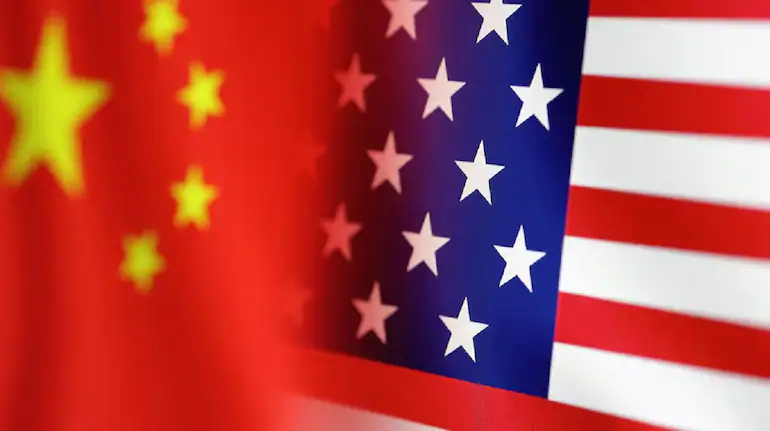
Quad and US-China Rivalry By Muhammad Haroon Shaukat
On the eve of the Summit of the Future at the United Nations, US President Joe Biden hosted the fourth apex meeting of Quad in Delaware, attended by the Prime Ministers of Australia, India and Japan. As reported by The Guardian, the US President was heard on a hot mic, that China continued to ‘act aggressively’ and was ‘testing’ the US and its allies in the Indo-Pacific region. His remarks exposed the US intent to vilify China while the declaration of the meeting carefully avoided mentioning China by name. China’s Foreign Ministry spokesman Lin Jian referred to Quad as a tool for the US to ‘encircle China’ and to maintain ‘US hegemony’…by ‘hyping up the China threat’.
Delaware Quad summit covered a wide array of issues but the core objective remained cementing partnerships in the Indo-Pacific to counter China. Quad is increasingly assuming importance in the geopolitical landscape of the South China Sea. China perceives the growing military presence and drills by the US and its allies in the region as a direct challenge to its territorial claims and maritime interests. The South China Sea and Taiwan Straits have become potential flashpoints. Following the Quad summit, the White House said the meeting reflected the way President Biden prioritised international alliances. Paradoxically, the world leaders at the United Nations summit, agreed on the ‘Pact for the Future’, a milestone declaration vowing tangible actions towards a more peaceful, safer, sustainable, and inclusive world for coming generations.
As if to signal India’s priorities, Prime Minister Modi attended the Quad summit, while his Foreign Minister addressed the General Assembly. At the United Nations, India maintained a distance from the US position on the Ukraine war. It championed the cause of the ‘Global South’ at the Summit of the Future, as it does in other organisations like BRICS. India continues with its policy of running with the hare and hunting with the hound.
The US considers China to be ‘the most consequential strategic competitor’ for the decades to come. The US believes that China is employing ‘increasingly aggressive endeavours’ to refashion the Indo-Pacific region, thus posing the most serious challenge to its national security. China, on the other hand, considers that cooperation between countries should not target any third party. Any regional initiative should promote regional peace, stability, and prosperity.
It is not surprising that the US-China rivalry is dominating the global security discourse. In her recent article ‘The Perils of Isolationism’ appearing in Foreign Affairs, Condoleezza Rice refers to China as an ‘adversary’ with a ‘global reach and insatiable ambition’. She argues that the current period of competition is not a redux of the Cold War but is more perilous as today’s security landscape features the danger of direct military conflict between great powers. She contends that now there is a bipartisan agreement on the US policy towards China and as a result, the United States’ technological decoupling from China is now well underway.
Tariffs and trade restrictions imposed by the US on Chinese products, especially EVs, lithium-ion batteries and photovoltaic solar energy equipment, and restrictions on exports of semiconductors and critical technologies have forced China on similar counter measures. This is leading to economic uncertainties and is affecting global supply chains. The decoupling of critical technologies poses risks of fragmentation in global tech standards, hindering global interoperability and innovation. A prolonged trade war could trigger a further global economic downturn.
Recognising the dangers of fierce competition, the two sides are also engaged in building safety guardrails. The US and China have been involved in quiet diplomacy led by US National Security Adviser Jake Sullivan and China’s Foreign Minister Wang Yi. In end August, Mr Sullivan also called on President XI Jinping and had a rare meeting with China’s most senior military officer, General Zhang Youxia. Mr Sullivan termed the talks aimed at the “responsible management” of China-US relations, as “very productive and constructive”. Mr Sullivan told President Xi, that the United States was not seeking a new cold war.
China’s response to the apprehensive and punitive outlook of the US is rational and pacific. According to the Chinese Foreign Ministry, President Xi told NSA Sullivan that both China and the US had a responsibility for history and the world. He advocated ‘solidarity and coordination’ for common progress rather than ‘confrontation’, adding that the two major powers should serve as sources of stability for world peace and shared development. China wishes to see the US as a partner. The US, on the other hand views China as a strategic rival. An interdependent world and a struggling global economy can ill afford adversarial relations between the emerging and the waning super powers. President Xi rightly remarked in San Francisco last year that the world is big enough for the US and China to succeed.
Pakistan renews Kartarpur corridor agreement with India for another five years
Muhammad Haroon Shaukat
The writer is a retired Ambassador and Director of Foreign Affairs at the Centre for Aerospace and Security Studies (CASS), Lahore, Pakistan. He can be reached at casslahore@gmail.com
Source: https://www.nation.com.pk/23-Oct-2024/quad-and-us-china-rivalry


